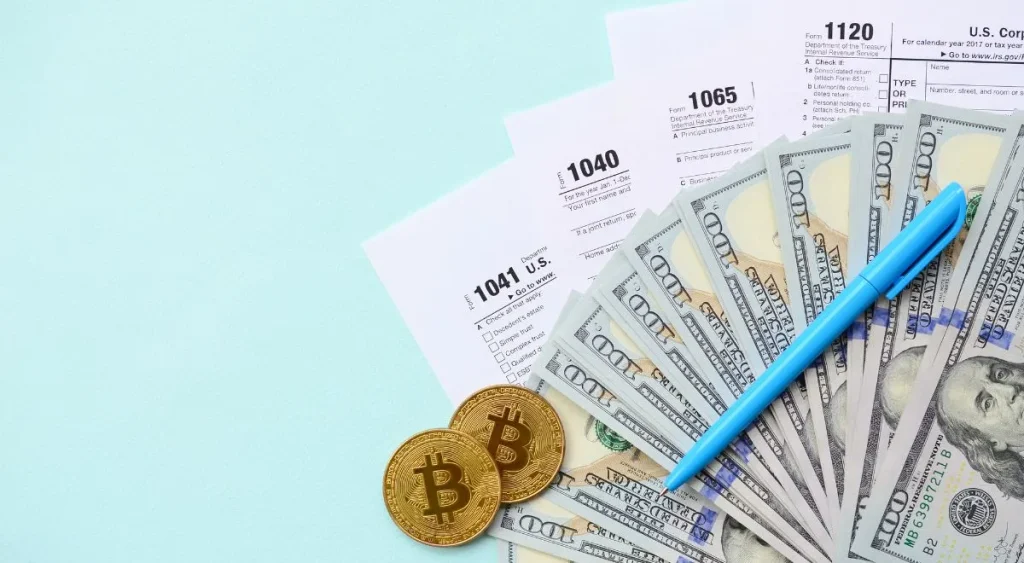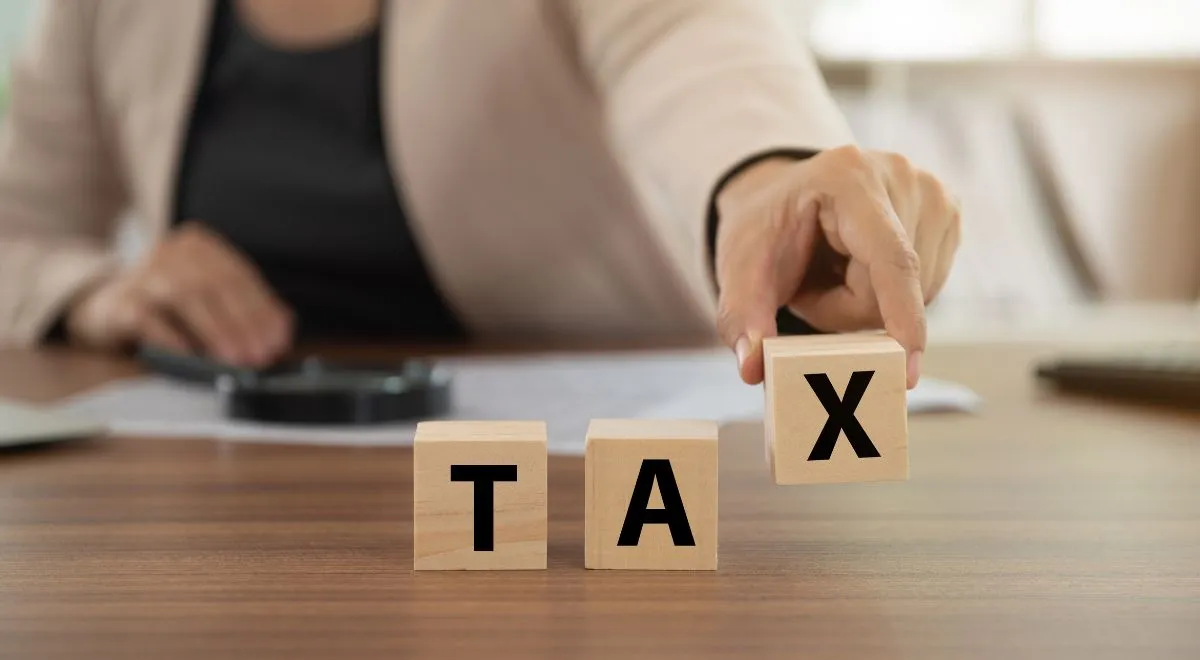As cryptocurrencies like Bitcoin and Ethereum become more popular in Australia, it’s crucial to understand how they’re taxed. The rules around crypto taxes are changing, and the Australian Taxation Office (ATO) is paying close attention to ensure everyone follows them. Australia, known for its forward-thinking regulatory approach to emerging technologies, has established guidelines and frameworks aimed at bringing clarity to crypto taxes in Australia.
Whether you’re just starting out in the world of crypto or you’re a seasoned investor, knowing about taxes is essential to avoid getting into trouble with the ATO. We’ll cover important topics like capital gains – that’s the profit you make when you sell your crypto for more than you paid for it – and the record-keeping rules set by the ATO. Keeping good records of your crypto transactions is important for accurately reporting your taxes. In this guide, we’ll break down the basics of Crypto Taxes Australia, explaining everything in easy-to-understand terms.
Is Crypto Legal in Australia?
Yes, cryptocurrency is legal in Australia. The Australian government recognizes cryptocurrencies as a legitimate form of digital currency, and it allows individuals and businesses to buy, sell, trade, and use cryptocurrencies for various purposes within the boundaries of the law.
The legal status of cryptocurrencies in Australia is governed by various regulatory bodies and laws, including the Australian Securities and Investments Commission (ASIC) and the Australian Taxation Office (ATO). These bodies provide guidelines and regulations to ensure that cryptocurrency transactions comply with existing laws, including those related to taxation, anti-money laundering (AML), and counter-terrorism financing (CTF).

What is ATO?
The Australian Taxation Office (ATO) plays a vital role in how cryptocurrencies are taxed in Australia. Essentially, the ATO treats cryptocurrency as a form of property, rather than as traditional currency. This means that when you buy, sell, or exchange cryptocurrencies, you may be subject to capital gains tax (CGT).
Here’s how it works
When you sell or exchange cryptocurrency, the difference between the purchase price and the selling price is considered a capital gain or loss. If you’ve held the cryptocurrency for more than 12 months before selling or exchanging it, you may be eligible for a discounted CGT rate. On the other hand, if you’ve held it for less than 12 months, you’ll be taxed at your marginal tax rate on the entire capital gain.
The ATO requires individuals who transact with cryptocurrency to keep detailed records of their transactions. This includes records of the dates of transactions, the value of the cryptocurrency in Australian dollars at the time of the transaction, what the transaction was for, and who the other party was.
The ATO’s role in crypto taxation in Australia is to ensure that individuals who buy, sell, or exchange cryptocurrency are fulfilling their tax obligations by reporting their transactions accurately and paying any applicable taxes, such as capital gains tax. Failure to do so could result in penalties or fines.
Crypto Taxes Events in Australia
In Australia, there are a few key events involving cryptocurrency that can trigger tax obligations:
- Trading Cryptocurrency: When you sell or exchange cryptocurrency for fiat currency (like Australian dollars) or for another cryptocurrency, it’s considered a taxable event. This means you might need to pay capital gains tax on any profit you made.
- Using Cryptocurrency to Buy Goods or Services: Using cryptocurrency to pay for goods or services also creates a taxable event. The ATO treats this as if you sold the cryptocurrency for its Australian dollar value at the time of the transaction, so you may need to pay capital gains tax on any profit.
- Receiving Cryptocurrency as Income: If you receive cryptocurrency as payment for goods or services you provide, it’s considered income and is subject to income tax. You’ll need to include the value of the cryptocurrency in Australian dollars as part of your assessable income at tax time.
- Mining Cryptocurrency: When you mine cryptocurrency, the rewards you receive are considered income and need to be included in your tax return at their Australian dollar value when you received them.
- Staking or Yield Farming: If you stake or participate in yield farming with your cryptocurrency holdings and earn rewards, you need to declare these rewards as income for tax purposes.
Remember, even if you haven’t converted your cryptocurrency into Australian dollars, you may still need to pay tax on any gains you’ve made. It’s important to keep accurate records of all your cryptocurrency transactions and seek advice from a tax professional if you’re unsure about your crypto taxes in Australia.
How much Tax is applied on Crypto?
The government collects income tax and capital gains tax at the same rate. Rather, any capital gains that people make from cryptocurrency assets are subject to income taxation at the same rate for whole year.
In Australia, your personal income tax rate determines the tax you pay on cryptocurrencies. To figure out the tax rate that will apply to you, check the table below. Naturally, keep in mind that investments that you have owned for a minimum of a year are eligible for a 50% CGT deduction.
| Taxable income | Tax on this income |
| 0 – $18,200 | Nil |
| $18,201 – $45,000 | 19c for each $1 over $18,200 |
| $45,001 – $120,000 | $5,092 plus 32.5c for each $1 over $45,000 |
| $120,001 – $180,000 | $29,467 plus 37c for each $1 over $120,000 |
| $180,001 and over | $51,667 plus 45c for each $1 over $180,000 |
How to Calculate Crypto Tax?
Calculating cryptocurrency taxes in Australia involves determining the capital gains or losses incurred from various transactions involving cryptocurrencies. Here’s a step-by-step guide with examples:
1. Gather Transaction Records:
Collect all records of cryptocurrency transactions, including purchases, sales, trades, and any other disposals. Make sure you have details such as dates, transaction amounts, and the value of the cryptocurrency in Australian dollars at the time of each transaction.
2. Calculate Capital Gains or Losses:
For each transaction, calculate the capital gain or loss using the following formula: Capital Gain/Loss = Proceeds from Disposal – Cost Base
Proceeds from Disposal: The Australian dollar value of the cryptocurrency when you sold, traded, or disposed of it.
Cost Base: The Australian dollar value of the cryptocurrency when you acquired it, including any incidental costs like brokerage fees.
If the proceeds exceed the cost base, you have a capital gain. If the cost base exceeds the proceeds, you have a capital loss.
3. Apply CGT Discount:
If you’ve held the cryptocurrency for more than 12 months, you may be eligible for the CGT discount, which allows you to reduce the capital gain by 50% to your crypto taxes in Australia.
Calculate the discounted capital gain: Discounted Capital Gain = Capital Gain * 50%.
4. Aggregate Capital Gains and Losses:
Total up all capital gains and losses incurred throughout the tax year.
5. Offset Capital Gains with Capital Losses:
If you have capital losses, you can use them to offset capital gains, reducing your overall tax liability.
Subtract total capital losses from total capital gains to determine the net capital gain.
6. Include Net Capital Gains in Tax Return:
Report the net capital gain in your tax return under the “Capital Gains” section.
If you’ve held the cryptocurrency for more than 12 months and are eligible for the CGT discount, include only 50% of the net capital gain in your assessable income.
7. Include Cryptocurrency Income:
If you’ve received cryptocurrency as income (e.g., from mining or as payment for goods/services), include the Australian dollar value of the cryptocurrency received as ordinary income in your tax return.
8. Pay Tax:
Calculate the crypto taxes payable on your total assessable income, including any net capital gains and cryptocurrency income, based on your marginal tax rate.
Example:
Let’s say you bought 1 Bitcoin for $10,000 and sold it for $15,000.
- To calculate the capital gain:
- Proceeds from sale: $15,000
- Cost base (purchase price): $10,000
- Capital gain: $15,000 – $10,000 = $5,000
- If you held the Bitcoin for more than 12 months, you’re eligible for the CGT discount, meaning you’ll only pay tax on 50% of the capital gain:
- Taxable capital gain: $5,000 / 2 = $2,500
- You would include the $2,500 in your taxable income for the relevant tax year and pay tax on this amount according to your marginal tax rate.
How to pay your Crypto Tax in Australia?
Paying cryptocurrency taxes in Australia involves following a few steps to ensure compliance with the Australian Taxation Office (ATO). Here’s a general overview of how to pay your crypto taxes:
Gather Your Transaction Records:
Collect records of all your cryptocurrency transactions throughout the tax year. This includes details such as the date of each transaction, the amount of cryptocurrency involved, the Australian dollar value at the time of the transaction, and any relevant fees or costs associated with the transactions.
Ensure you have records of both purchases and sales of cryptocurrencies, as well as any other taxable events such as using cryptocurrency to pay for goods or services.
Calculate Your Capital Gains or Losses:
For each cryptocurrency transaction, calculate the capital gain or loss. This involves subtracting the cost base (purchase price) from the proceeds of the sale or disposal.
Keep track of your gains and losses separately for each cryptocurrency you’ve traded or held during the tax year.
Determine Your Total Capital Gains or Losses:
Once you’ve calculated the gains or losses for each transaction, sum them up to determine your total capital gains or losses for the tax year.
Take into account any applicable discounts or concessions, such as the CGT discount for assets held for more than 12 months.
Complete the Relevant Tax Forms:
When lodging your tax return, use the appropriate sections or schedules to report your capital gains or losses from cryptocurrency transactions.
If you’re engaged in cryptocurrency trading as a business, you may need to use the Capital Gains Tax (CGT) schedule or the Business and Professional Items schedule. Provide accurate and detailed information about each transaction, following the instructions provided by the ATO.
Calculate Your Tax Liability:
Determine the amount of tax owed on your capital gains from cryptocurrency transactions. This will depend on your total taxable income for the tax year, as well as any applicable tax rates and concessions.
Consider how you can use incurred capital losses to offset your capital gains and reduce your overall tax liability.
Pay Your Tax:
Pay any tax owed to the ATO by the due date. This is typically October 31st for individuals lodging their tax returns without the assistance of a tax agent.
To ensure your payment is processed correctly and on time, use the payment methods specified by the ATO, such as BPAY or electronic funds transfer.
Can you avoid Crypto Taxes in Australia?
The asset exemption for personal use can apply to you. Transactions using cryptocurrencies are free from CGT if:
- The cryptocurrency is used to buy products or services for yourself, such as making online hotel reservations or shopping at establishments that take cryptocurrency.
- Your personal use assets that you purchased for less than $10,000 are the source of your capital gains.
However, the ATO states that if you purchase, hold, or use cryptocurrency, it does not classify as a personal use asset.
- As a financial investment
- As a component of a business project
- Throughout corporate operations.
According to the ATO, holding cryptocurrency for a while before using it to purchase goods for personal use makes it “less likely” to be categorized as a personal asset. To put it another way, your chances of being eligible for the personal use asset exception decrease with the amount of time you keep your cryptocurrency before spending it.
Final Words:
Understanding how cryptocurrency taxes work in Australia might feel overwhelming, but it’s important to get it right. By knowing when you need to pay tax, calculating what you owe accurately, and making sure you report everything correctly, you can follow the rules and keep your tax bill as low as possible.
Keep good records of all your crypto transactions, ask for help if you need it, and stay up to date with any changes in the law. With a bit of effort, you can handle your crypto taxes in Australia without any trouble.




